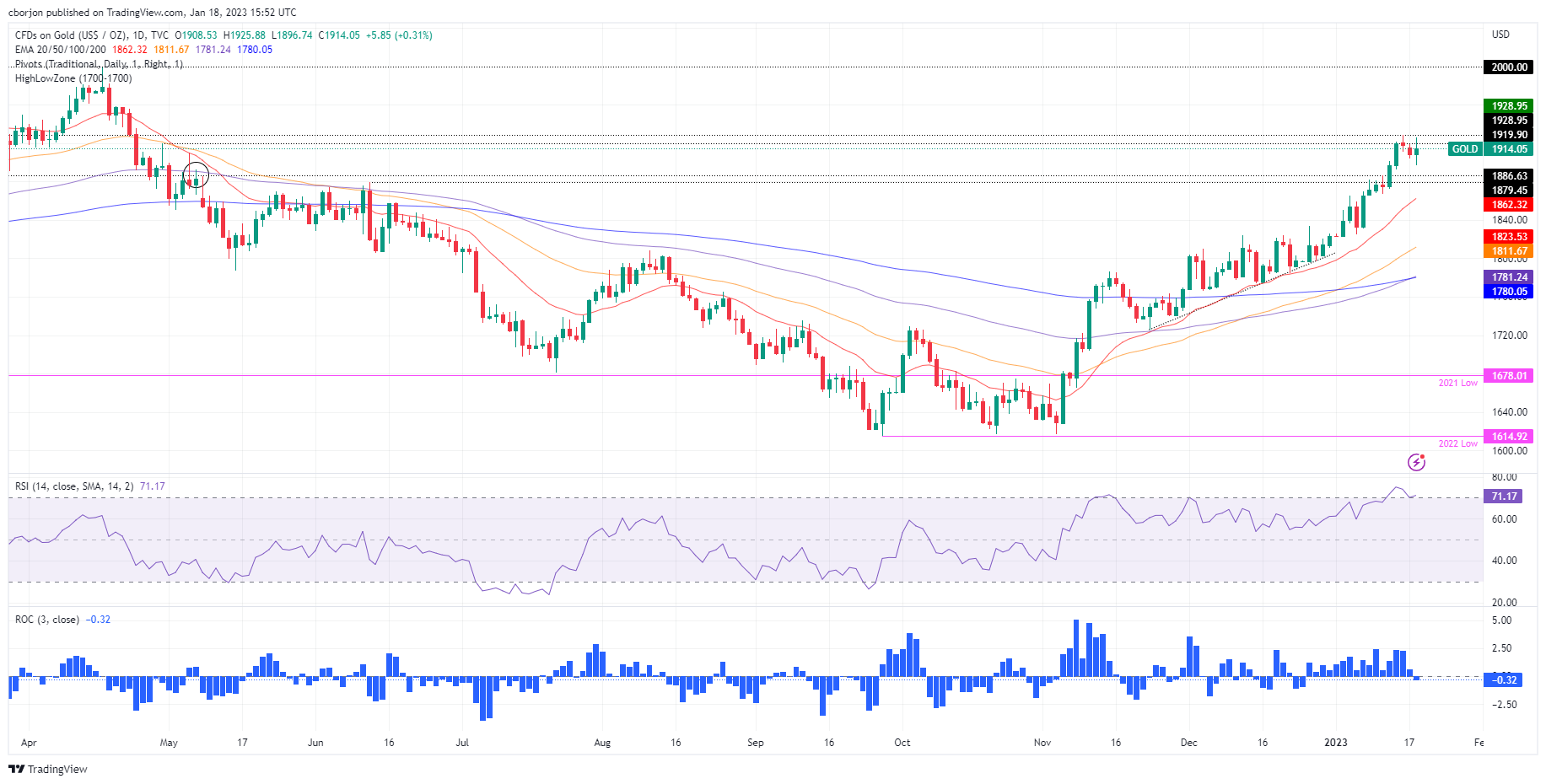- Gold Price Forecast: XAU/USD bounces off three-day lows and climbs above $1910 on weak US data
Notícias do Mercado
Gold Price Forecast: XAU/USD bounces off three-day lows and climbs above $1910 on weak US data
- US Retail Sales plummeted, while PPI flashed that inflation continues to ease.
- Industrial Production in the United States shranks for two consecutive months.
- Gold Price Analysis: A daily close above $1900 is needed to exacerbate a rally to $2000.
Gold price snaps two days of straight losses, gaining traction on Wednesday, as the US Dollar (USD) slides to eight-month lows, as shown by the US Dollar Index (DXY). Data released in the United States (US) showed an improvement in inflation, while retail sales slowed a tick, further cementing the case for the US Federal Reserve (Fed) to slow down its tightening policy. At the time of writing, XAU/USD exchanges hand at $1914.91.
Retail Sales in the United States plunged
Wall Street opened in the green, bolstered by US data. The US Commerce Department reported that December Retail Sales plunged -1.1% MoM, below estimates of a -0.8% contraction, tumbling for two consecutive months. November figures were downward revised to -1.0% from -0.6%. Retail Sales on an annual basis rose 6%, unchanged from November’s data.
US inflation at the gate, also known as PPI, eases
Inflation-wise, the US Producer Price Index (PPI) for December slides from -0.1% to -0.5% MoM data that could encourage the Federal Reserve to raise rates significantly higher. Excluding volatile items like food and energy, the so-called core PPI rose by 0.1% MoM, unchanged when compared to consensus and lower than November’s 0.2%. Annually based figures showed an increase of 6.2% in PPI, below estimates of 6.8%, while core PPI rose by 5.5%, beneath the 5.7% expected.
Industrial Production in the US contracts for two straight months
Aside from that, the Federal Reserve reported that Industrial Production in the US decreased -0.7% in December and -1.7% in Q4. Additionally, US manufacturing output fell -1.3% last month, albeit November’s data was downward revised -1.3%.
Fed’s Bullard insists on increasing rates above 5%
Elsewhere Fed officials began crossing newswires, led by the St. Louis Fed President James Bullard. He said the Fed should get rates above 5% “as quickly as we can” before pausing rate hikes as the US central bank tries to curb sticky inflation. Bullard added that inflation “will probably recede in 2023 but not as fast as financial markets expect.”
In the meantime, the US Dollar Index (DXY), which tracks the buck’s value against a basket of six currencies, tumbled to eight-month lows around 101.528 but lately has recovered some ground and exchanged hands around 101.871. Another reason that keeps the XAU/USD underpinned is falling US Treasury bond yields, with the 10-year benchmark note rate plunging below 3.40%, at 3.390%, as it slides 16 bps.
Gold Price Analysis: Technical outlook
Technically speaking, the XAU/USD extended its gains, though retraced somewhat from its daily highs of $1925.88, probably influenced by a mild recovery of the greenback and the Relative Strength Index (RSI) entering overbought conditions. The Rate of Change (RoC) suggests that buying pressure begins to wane. If XAU/USD misses printing a daily close above $1900, that will exacerbate a resume of a downtrend toward the 20-day Exponential Moving Average at $1862.60. Otherwise, and the path of least resistance, the XAU/USD might test the YTD high at $1928.95, followed by the April 21 high of $1957.72, ahead of the $2000 mark.
